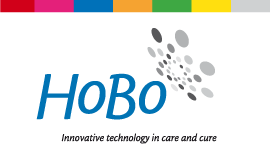In the field of care for people suffering from epilepsy or sleep-wake disorders high-quality seizure detection methods are applicable in a number of ways:
Differential diagnostics
By using high-quality seizure detection it is possible to determine with a higher degree of accuracy whether epileptic or non-epileptic seizures are occurring. In other words: is the patient really suffering from epilepsy, or not?
Complementary diagnostics
The more the treatment officer understands the nature, cause, frequency, duration and intensity of the epileptic seizures, the better it is possible for him/her to determine the most appropriate and most effective treatment.
Monitoring and detecting complications
High-quality seizure detection can aid in reviewing the results of a chosen treatment. Other questions in the area of monitoring are: What type of sensors is most effective in detecting the epileptic seizures of the patient? How can we calibrate the detection equipment optimally per patient? When do which complications occur and how to anticipate best?
Therapy
By using seizure detection the effects a chosen therapy can be judged objectively. Especially nocturnal seizures are very hard to observe reliably without detection equipment; not only for the patients themselves but also for (trained) people.


